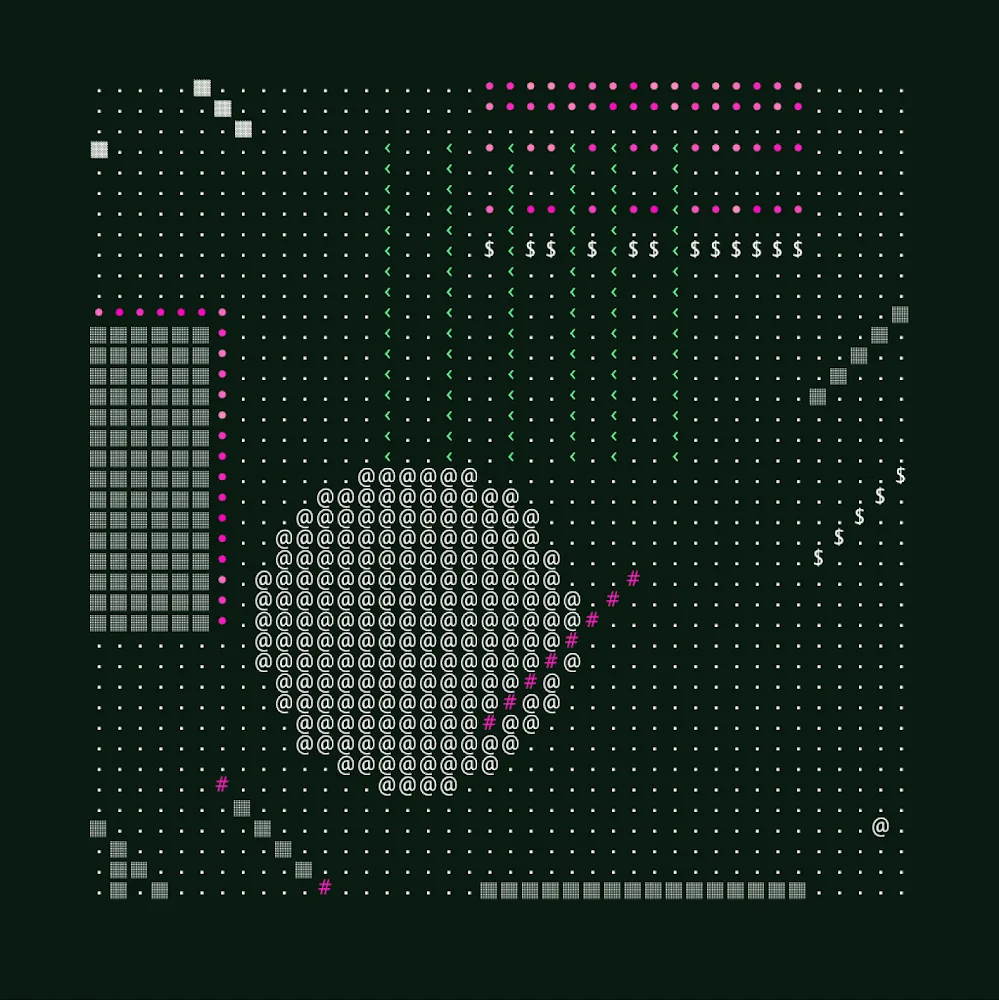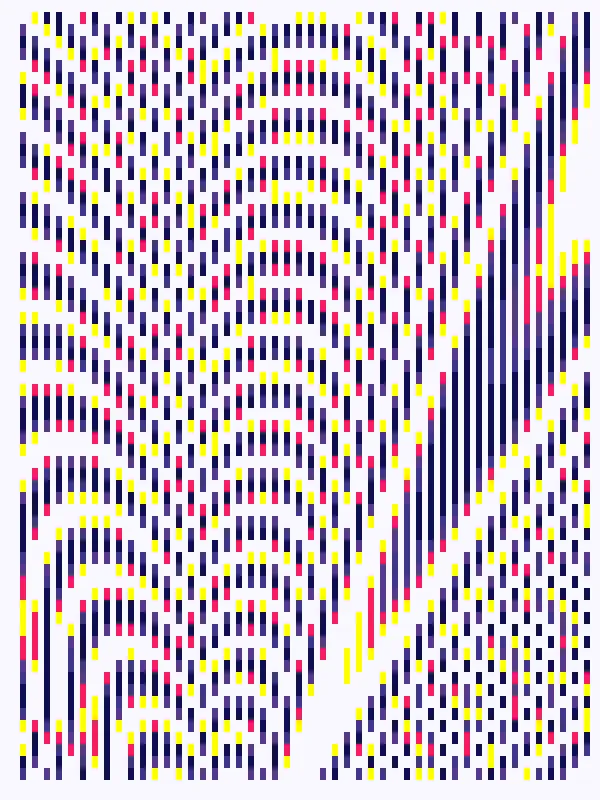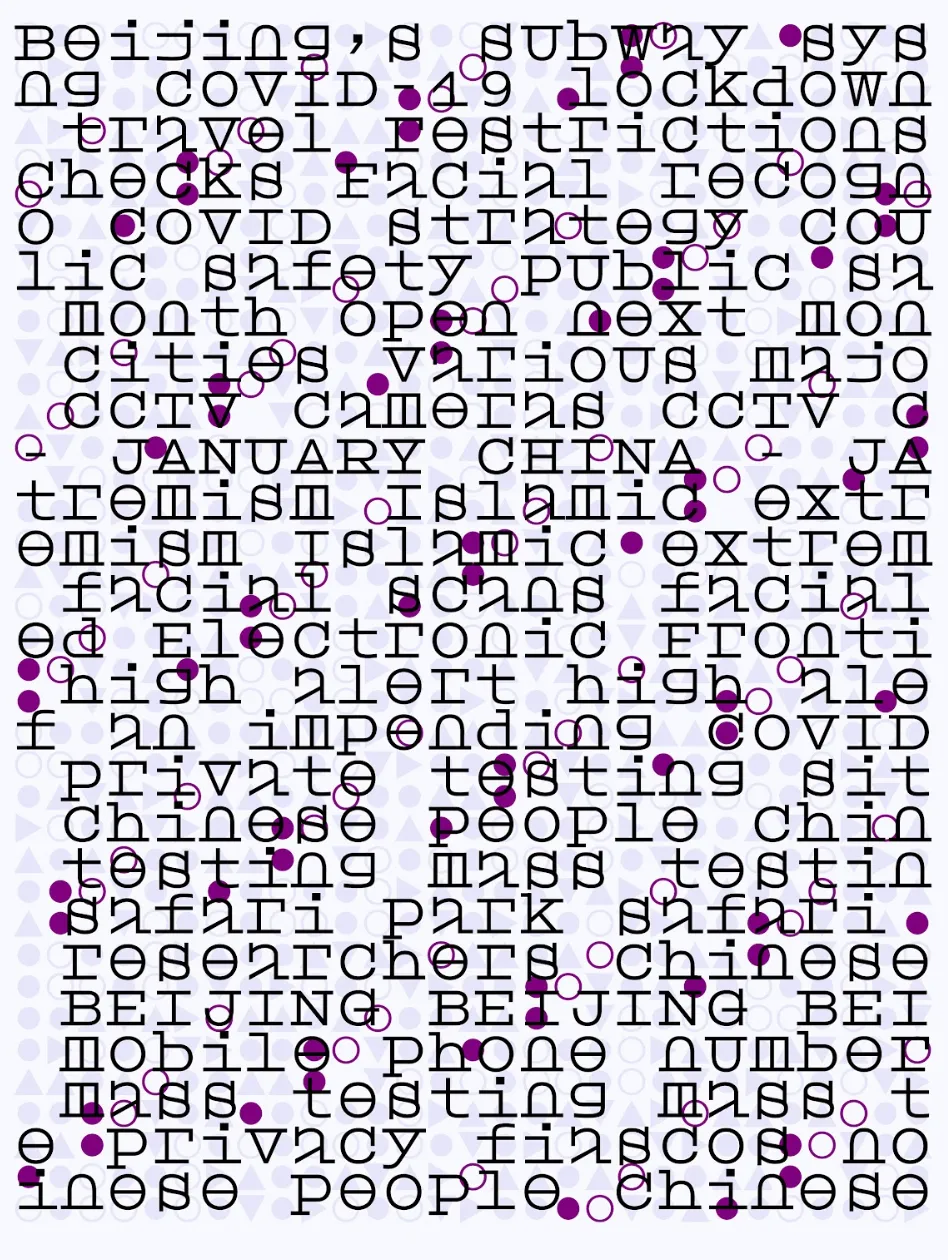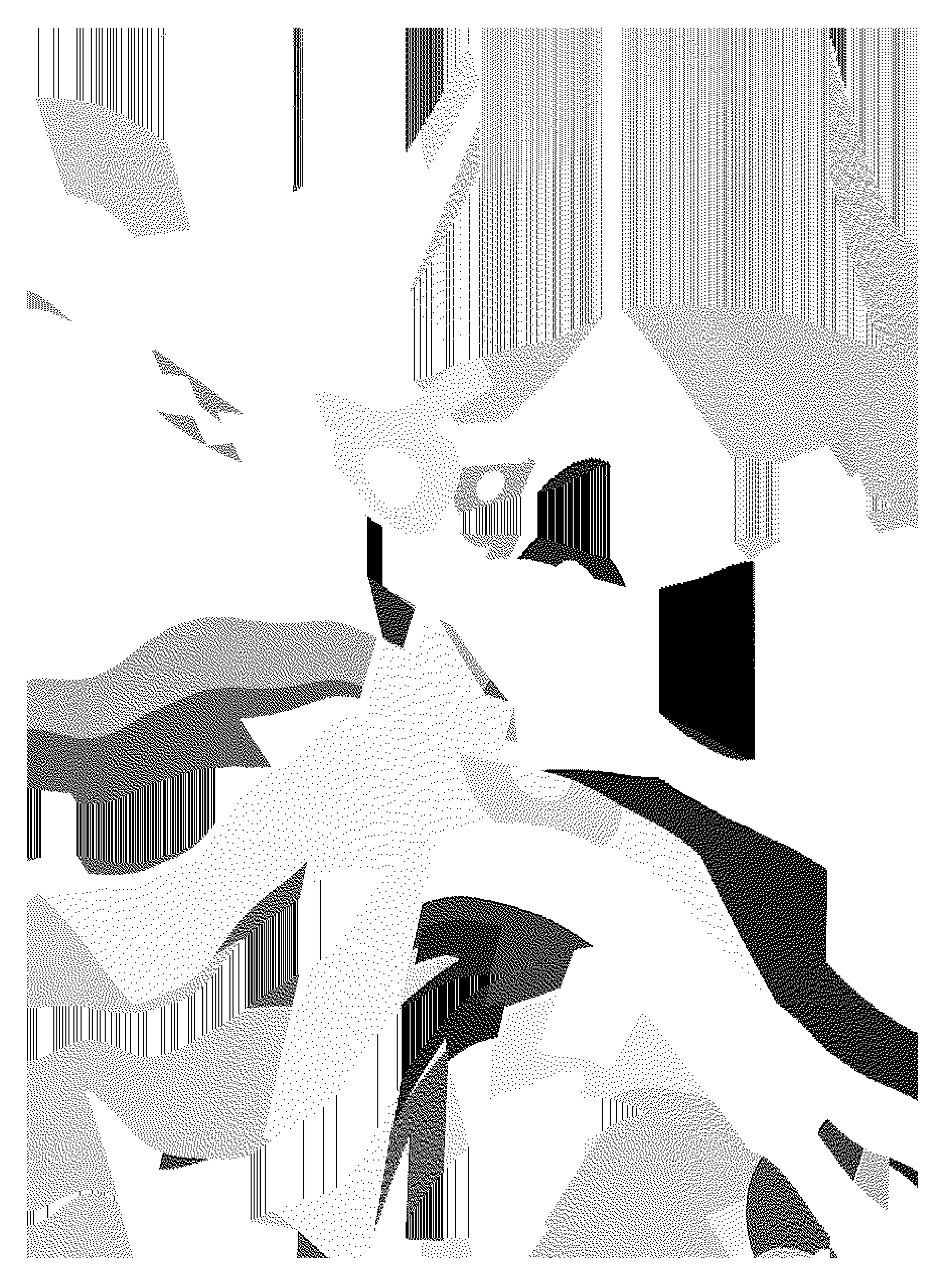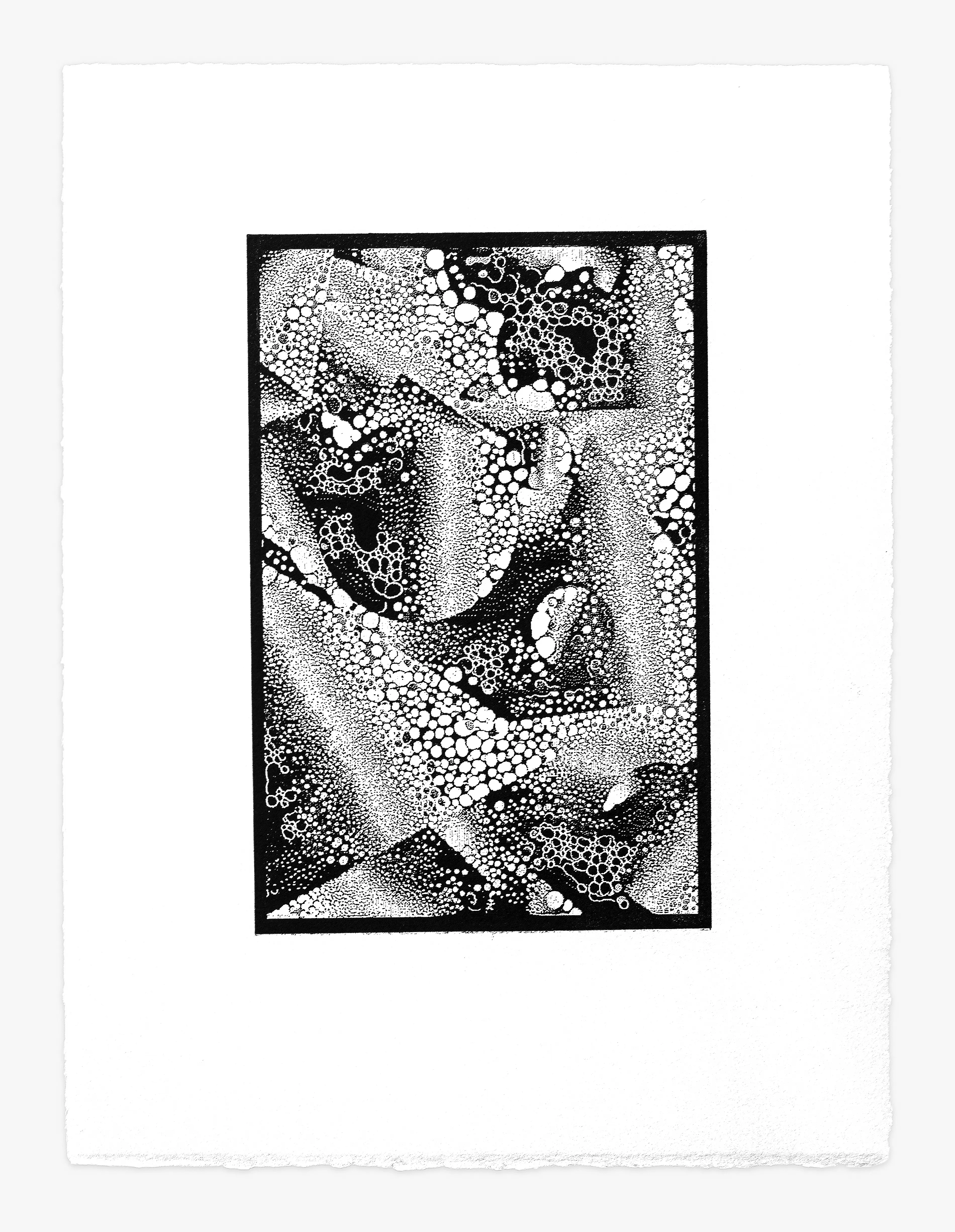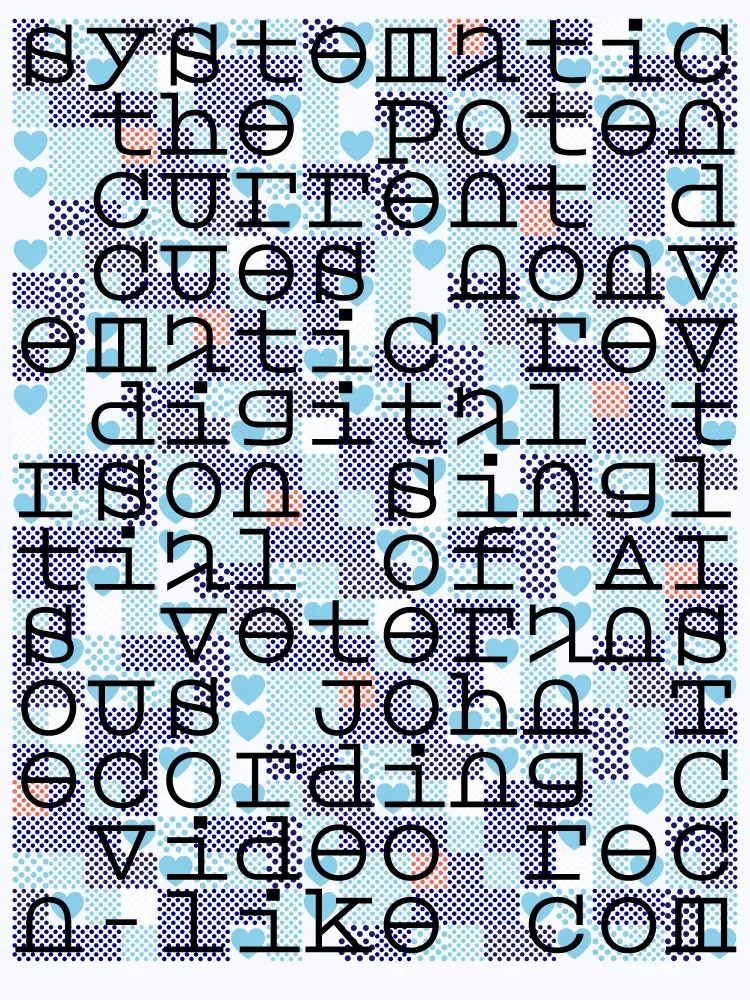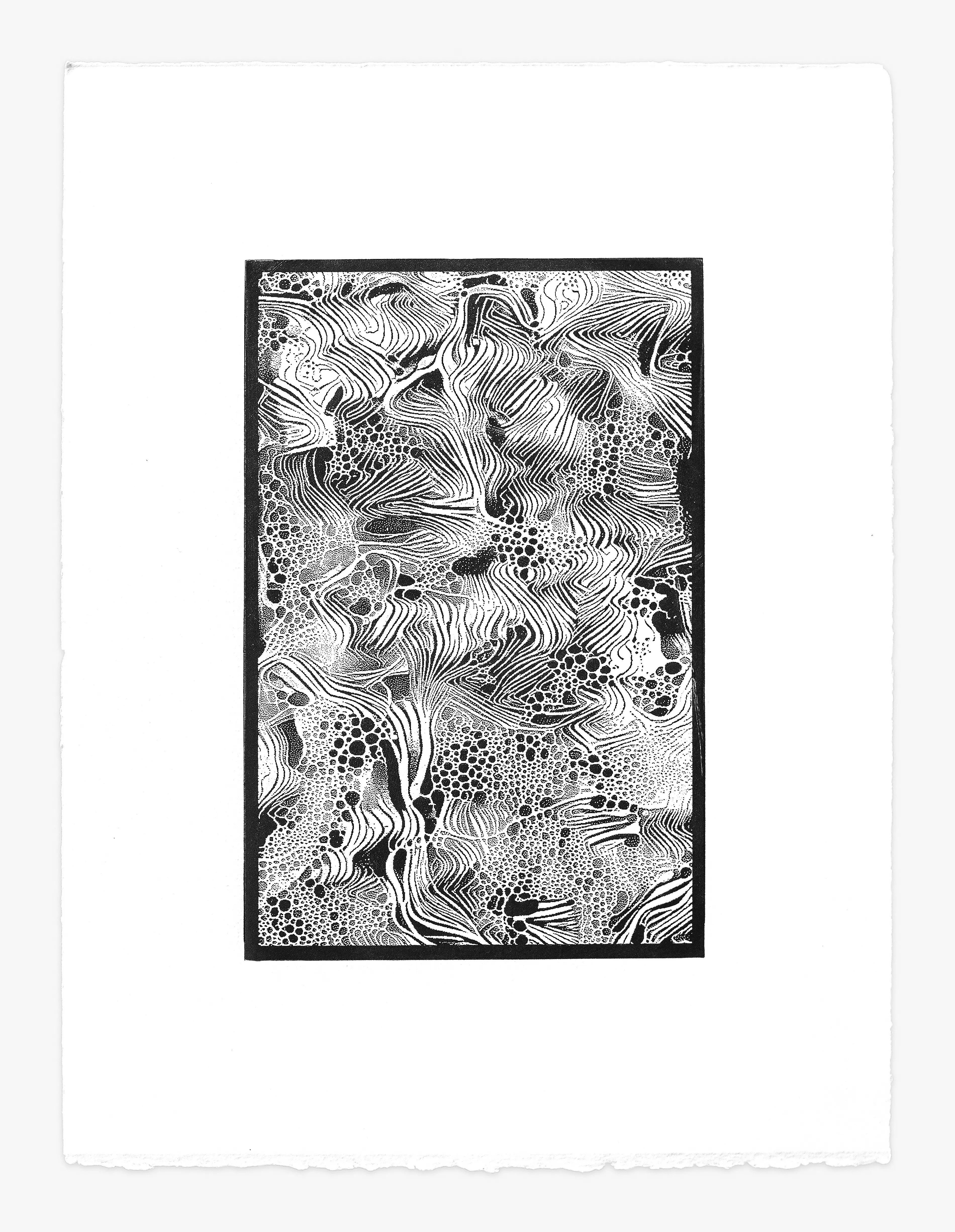Subscribe to get the latest on artists, exhibitions and more.
On Neural Drawings of Mark Webster

Mark Webster’s new series for Verse, Neural Drawings, has been – by his own admission – a labour of love. Born out of a ‘pure intention to experiment’, the complex, composite process Mark uses combines generative and traditional methods (and subjects) to eventually produce beautiful, editioned printed works. Conceptually, Neural Drawings draws on Mark’s highly personal experiences of memory creation and loss, as well as proposing an expanded, more human form of generative art.
Mark’s previous series produced for Verse, Hypertype, used data from text sentiment analysis (artificial intelligence programs used to intuit human emotions from text) to create generative outputs. Through this process, he transformed a dogmatic, possibly harmful technology into a reflective experience. Neural Drawings are similarly concerned with such literal and conceptual transmutation of AI: Mark began the series by developing a dataset consisting of abstract hand-drawn gestures – some of which he made himself.
Mark used this dataset to produce outputs using his own ‘traditional’ generative algorithms, which by their nature produce hard-edged and mechanical-looking images. He then takes this generative output and plugs it into a generative adversarial network (GAN).
GANs are themselves generative machine learning models. Once they are given some training data – in this case the dataset of hand-drawn marks – they can create new data that mimics – impressively – the training data. The most notable example is a GAN that can create images that look uncannily like real people as they are trained on a large dataset of human faces.
Mark explains that the geometric generative ‘serves as an underlying structure’ when it’s mixed with the neural networks of the GAN - ‘almost like a transfer learning of kind of the handle mount on to the geometrical structure’.
Mark then selected eight outputs from this process and turned each of these into a physical ‘matrix’. Each matrix is made by converting the output into a bitmap image, which was then laser etched onto the plexiglass. These plexiglass plates are then used to hand print twenty editions each, creating unique works each complete with their own subtle variations and imperfections. These works are then photographed to produce digital files for sale as part of the drop.

The printed works appear as a curious mixture of the machine aesthetic and the handmade. They are redolent of intricate lace, ripples on oily water and most concretely – microbiology. Their scale is both human and minute: there is a slippage of register which occurs when looking at the largest of the series in particular: what appear as handmade, wave-like forms suddenly gives way to individual, hard-edged pixels as you edge closer.
Their black and white palette means that we are more alive to the series’ compositional elements and gestural details than we might be with a colourful work. Equally, it places them within the visual lexicon of microbiology – the study of life at a microscopic level – which accentuates the work’s conceptual exploration of humans and machines: at a cellular level, a human arguably becomes a machine – executing specialist functions, totally devoid of consciousness.

Mark explains the idea behind this manifold combination of media ‘was to transfer the visual aesthetic of the abstract hand drawn marks with the outputs of the very hard edged, mathematical, geometrical form that was being produced from my majority of work. I wanted them to have a different feel – to get away from this mathematical view of generative art’.

In the 80’s, artist Roman Verostko commented that ‘in a very uncanny way software appears to have a life of its own. The artist's role is to humanise it - give it the form and structure to serve the quality of our art and of our life.’ Mark picked out this comment as a way into understanding his own thinking, going onto explain that he developed Neural Drawings as he was trying to ‘break away from this whole tradition of gen art being a play on a set of programmes with a bit of randomness - that just plays out some combination of rules – I’m trying to break that rule’.
He further points out that ‘there's a slight tendency to reduce everything to randomness in gen art. We almost think of making it as just adding randomness: the same as John Cage throwing dice. But with Verostko’s work, there's something much more mystical and deeper, where he developed this idea of human gesture and he's working with plotters, and different techniques.’
Mark’s nuanced approach to gen art – where the generative function becomes part of a larger working process including GANS and printing – reflects his desire to create work ‘that's not just writing a programme and pressing the execute button - and letting it happen’, but is suffused with the messy reality of the world, and filtered through his personal experience; the emphasis on trace, presence and absence reflecting the reality of memory in a way a purely digital work could not capture.
Mark Webster
Mark Webster was born in Canada, raised in England and currently lives in France. After graduating in London with a modern languages degree in 1997, he moved to Paris and began to orientate his work towards the arts. This has involved an eclectic mix of activities in diverse areas such as animation, sound design, graphic design, teaching and even a stint as a journalist working in the field of...
